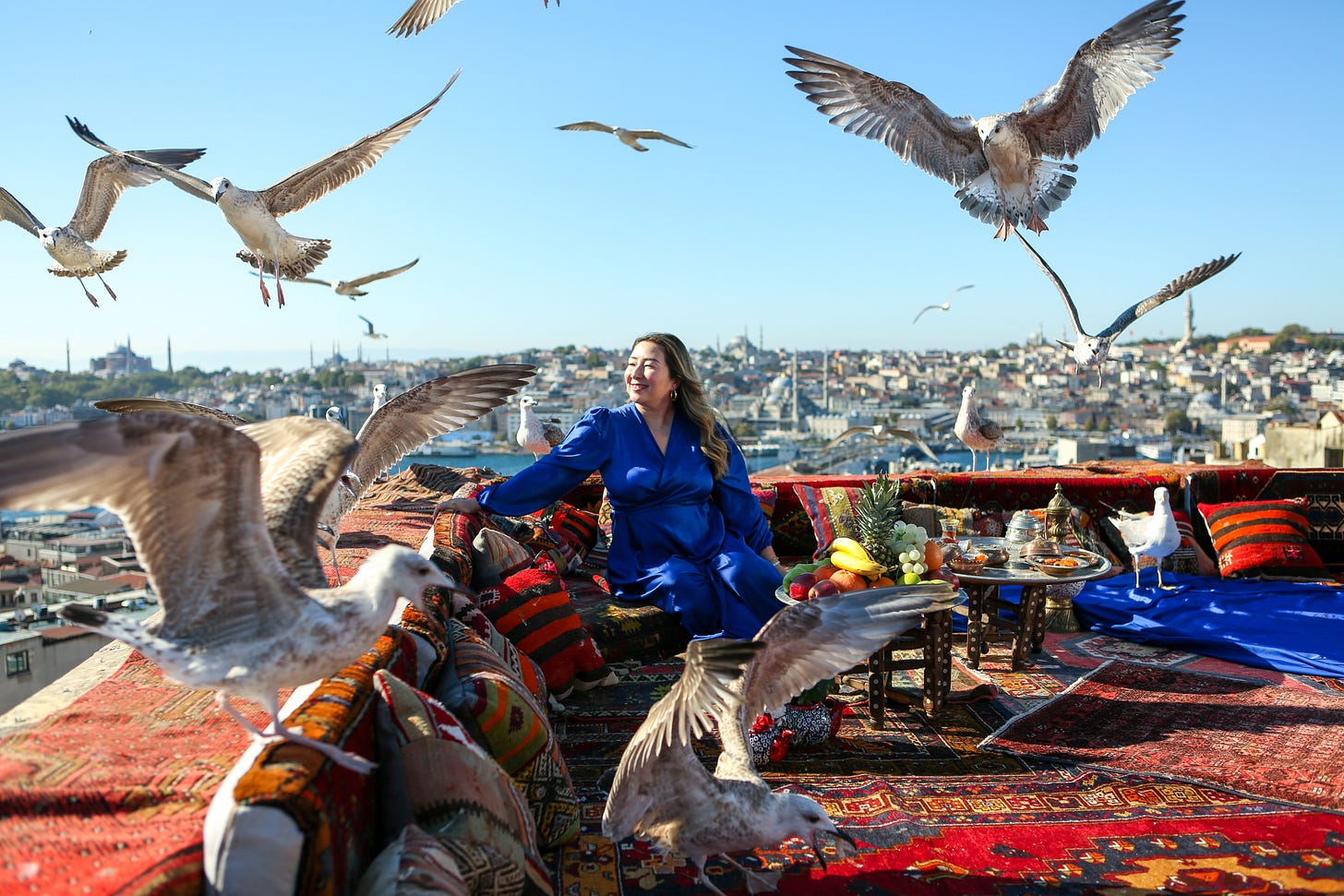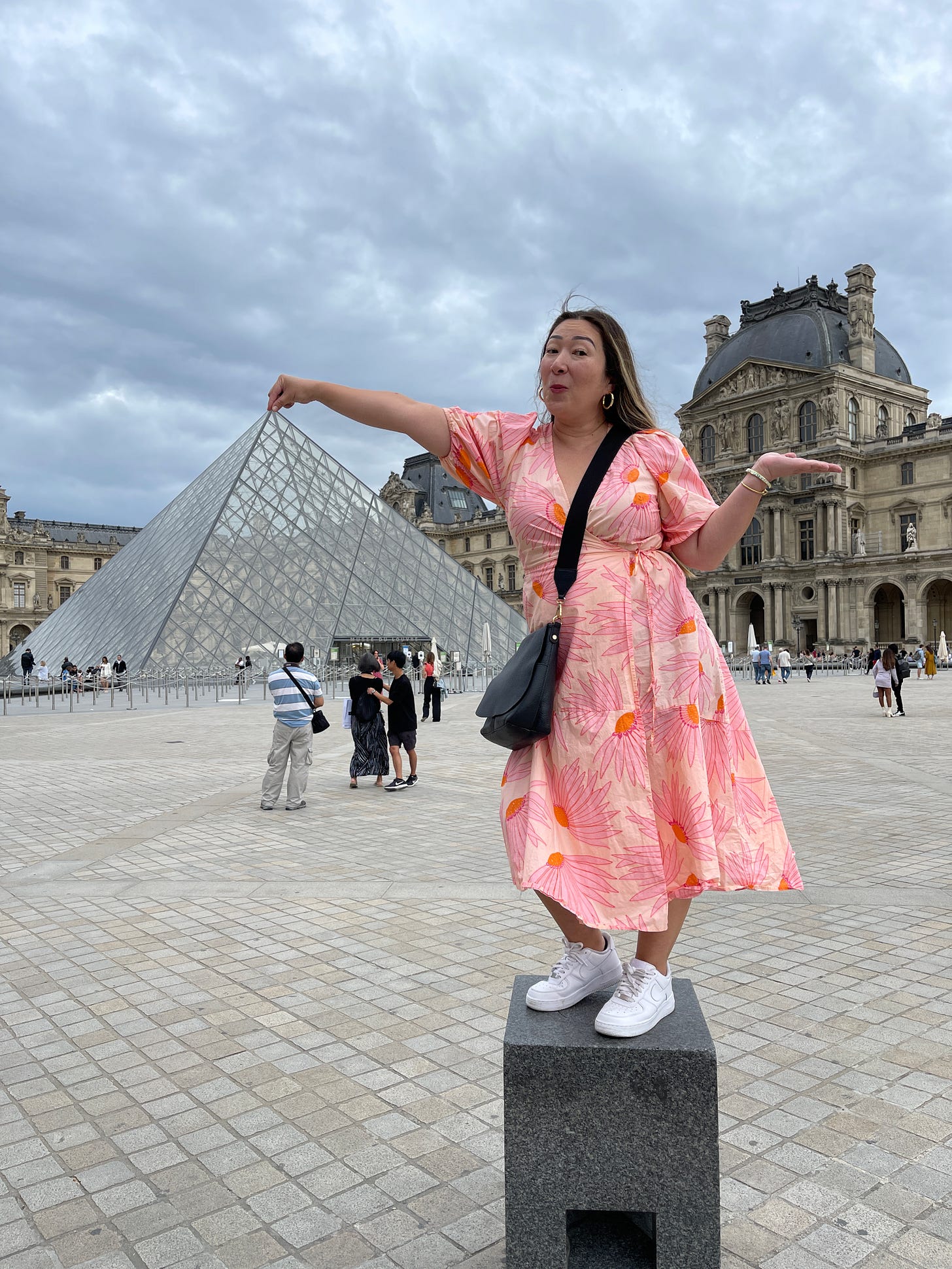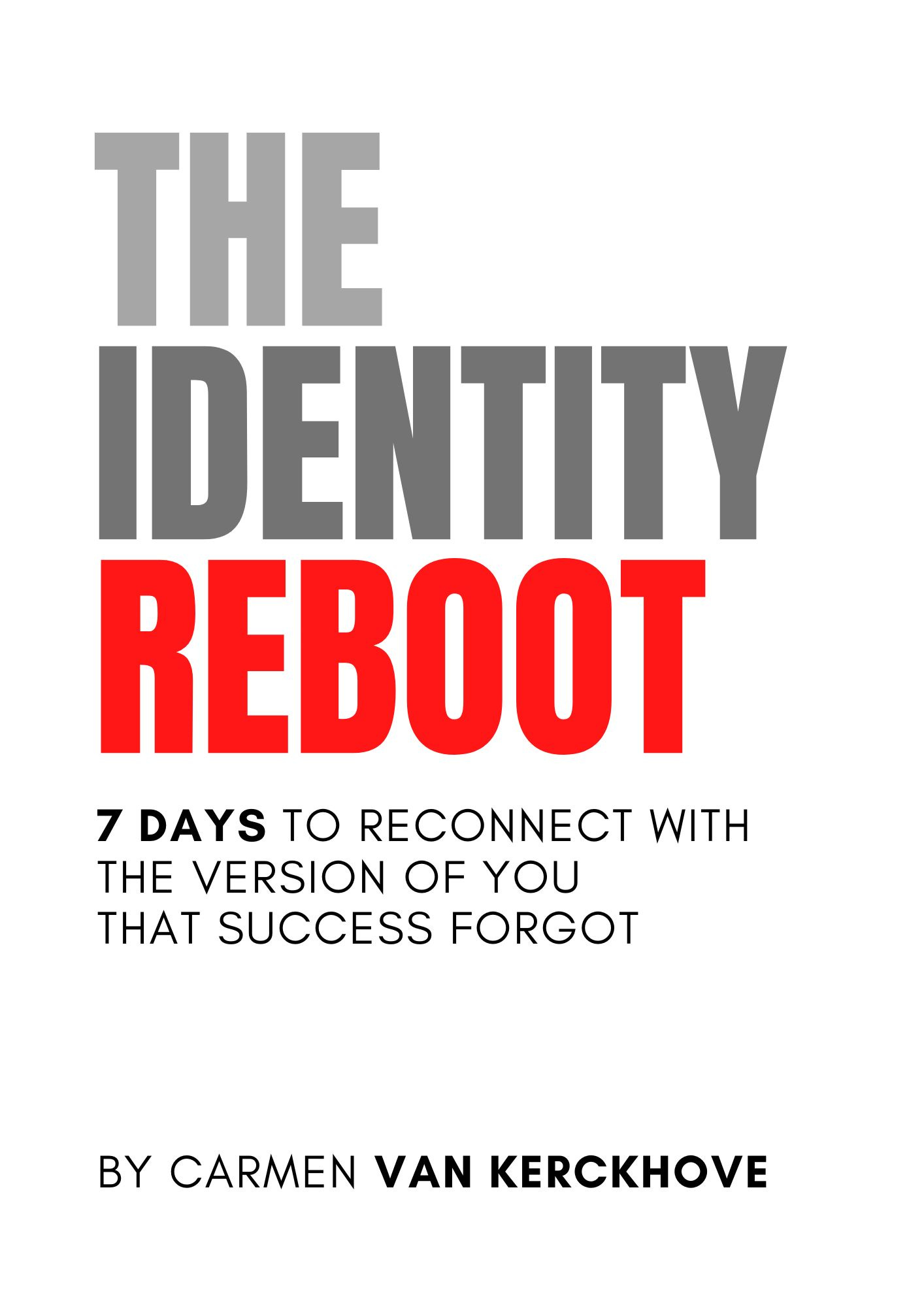Why being a tourist embarrasses you
How the "not like other girls" mindset is quietly ruining your travels
The Instagram Reel I posted recently hit a nerve.
"I don't know who needs to hear this," the on-screen text read, "but your 'Instagram vs. Reality' video should be retitled 'I went somewhere touristy and was shocked to find tourists there.'"
You've seen these videos—someone shows the Trevi Fountain looking empty and magical, then cuts to the "real" version: crowds, chaos, crying children, spilled gelato. The creator acts shocked—shocked!—that one of the most photographed landmarks on earth has other people visiting it.
This reaction fascinates me because it reveals something deeper than just social media posturing. It exposes our curious relationship with tourism itself: we want the benefits of popular destinations while somehow maintaining the illusion that we've discovered something unique.
This mindset—this need to differentiate ourselves from "regular tourists"—doesn't just manifest online. It permeates travel culture, creating a constant performance that might be robbing us of genuine joy.

The "not like other tourists" syndrome
You know the "not like other girls" type: the woman who says she’s just one of the guys. She rolls her eyes at makeup, hates drama, doesn’t get along with other women—but always makes sure the right men are watching.
It’s not about true nonconformity. It’s about performing a version of different that still earns approval.
Travel culture has developed its own version of this mindset: the “not like other tourists” syndrome.
I see it all the time in New York. Someone shows up with something to prove. They skip the Midtown hotels—too basic—and book a loft above an auto body shop in Bushwick instead. They wander around Brooklyn in vintage Carhartt, clutching a film camera, hoping someone will mistake them for a local and invite them to their artist commune—or better yet, their polycule.
In their mind, they’re not tourists. They’re travelers. They’re “doing New York like a local.”
But as an actual New Yorker, I still think of you as a tourist—just one with an advanced case of delusion. And honestly, that’s fine. Just don’t act like skipping Times Square makes you one of us.
This isn’t just a travel thing—it’s a people thing. In 2015, social psychologist Régine Debrosse studied folks who felt caught between cultures—not fully at home in either their native or adopted countries. You’d think that would hurt their confidence, right? But for people who really needed to feel unique, that in-between identity actually boosted their self-esteem.
Why? Because they weren’t trying to belong. They were trying to stand out.
This perfectly describes what happens when we reject the "tourist" label. It's less about enhancing our actual experiences and more about crafting an identity: I'm not a basic tourist; I'm a thoughtful traveler. I'm conscious. I'm different.
Perhaps this isn't purely ego. Maybe it's also psychological self-protection. But does it enhance our travels? Or does our fixation on differentiation prevent us from being fully present?
The joys we miss while performing
Milan was our first stop in Italy during our family’s 22 Cities in 2022 project. We had gelato daily—sometimes twice—and every time, we did the most predictable thing possible: snapped photos of our cups against charming Italian backdrops.
Was it original? Not at all. Was it something locals would do? Definitely not. Did we care? Not in the slightest.
We knew we looked like obvious tourists and we leaned into it. We weren’t performing sophistication—we were just enjoying ourselves.
But I’ve seen so many travelers deprive themselves of these simple joys because they’re too conscious of appearances. They worry that taking gelato photos seems basic, that visiting famous landmarks makes them look unsophisticated.
The irony is painful: in trying to look authentic, they end up having an experience that’s anything but. Because when travel becomes a performance, the audience isn’t other people. It’s your ego. And it never claps.
The truth about what locals actually think
People who obsess over not looking like tourists are usually the ones who’ve never lived in a place that gets flooded with them. Millions of tourists pass through New York every year and despite what you might think, we locals don’t hate them.
What gets under our skin isn’t tourism itself. It’s the people who stop in the middle of a packed sidewalk, block subway doors, or treat the whole city like their personal photo shoot while ignoring the actual lives happening around them.
The problem isn’t being a tourist in New York. It’s being a rude one. Just remember: you’re a guest in our home.
But some travelers aren’t just worried about being polite—they’re desperate not to be seen as tourists at all. That’s a different game entirely.
Consumer psychologist Maria Raimondo calls this “dissociative desire”—the instinct to scream “I’m not one of them.” It's less about enjoying the trip and more about managing perception. That’s the “traveler, not tourist” performance in action: skipping the landmarks, avoiding the obvious, and curating an experience designed to signal status, not joy.
But here's the reality check that might sting: you're not fooling anyone—and you don't need to. Locals can spot a visitor from a mile away, no matter how well-draped in linen or how niche your café choice is.
This is where things get a little uncomfortable
There’s a certain kind of travel anxiety that only shows up in specific places. You’ll see white American tourists headed to France or Italy spiral down a rabbit hole of “how not to look American” TikToks. They research the right shoes, the right bags, the right hairstyles—convinced they can pass as locals if they just try hard enough.
But that anxiety rarely shows up when their destination is Kenya, Vietnam, or Peru—places where blending in visually isn’t even possible. And yet, that doesn’t seem to bother them.
Meanwhile, Americans of color visiting ancestral homelands like Japan or Ghana might care deeply about cultural respect—but they’re not usually trying to pretend they’re from there. They already know what it’s like to be visibly “othered.” Standing out isn’t new. It’s just Tuesday.
So who are we really trying to impress? And what does that say about the hierarchies we’ve swallowed—about which cultures feel worthy of our performance and which don’t?
And while we're on this topic, let's be really clear about two things.
First: locals can always tell who's not from there. You are absolutely deluding yourself if you think otherwise.
I'm from New York. When I visit Miami—same country, same language, same coast—locals immediately clock me as an outsider. Every city has its own vibe, its unspoken rhythms, its cultural shorthand. If I can't pass as local in Miami, the idea that you'll successfully blend in Paris or Barcelona with the right shoes is just wishful thinking.
Second: to those justifying their linen wardrobes with "it's safer to blend in"—let's get real. During our Italy trip, I watched countless American tourists in carefully selected "European" outfits walking around with bags wide open, phones left unattended on café tables, completely oblivious to their surroundings.
Visitors aren’t targeted because they look like tourists. They are targeted because they look like easy marks.
That curated linen outfit won't protect you if you're not paying attention.
What you miss by avoiding the "basic"
One of the most baffling things I hear from first-time visitors to New York, especially during the holidays, is: “We want to skip the touristy stuff. What’s off the beaten path?”
And listen, I get it. No one wants to feel basic. But here’s the thing: my family travels constantly, and we still stay in New York at Christmas because there’s nothing else like it. The Rockefeller Center tree, the department store windows, ice skating in Bryant Park—these aren’t just photo ops. They’re actual magic. And they exist only here.
So if you’re flying in during peak holiday season—paying holiday prices—and avoiding the very experiences that make New York magical in December… what exactly are you hoping to find instead?
Social psychologist Anthony Lantian studied this avoidance behavior and found something interesting. People with a high need for uniqueness often make choices not because they’re better, but because they make them feel different. In other words, skipping iconic places isn’t about better travel—it’s about signaling status.
Here’s what seasoned travelers eventually figure out: a lot of cities in the same region start to blur together. Whether you're in North America, Southeast Asia, or Western Europe, cities often share a similar rhythm, aesthetic, and cultural feel.
What actually makes a destination stand out? Often, it’s the exact things you’re skipping in your quest to seem different. The architecture. The history. The iconic landmarks that only exist there.
Avoiding those places doesn’t make your experience more meaningful.
It just makes it less distinct.
Permission to enjoy the obvious
Consider this your permission slip to embrace the obvious: Do the iconic thing. Be unoriginal. Be a tourist.
Take that cheesy photo pinching the top of the Louvre pyramid. Line up for that famous pastry everyone posts about. Join the guided tour if it interests you.
If something lights you up, embrace it—even if thousands of people are doing the exact same thing beside you. If an experience feels cliché, enjoy it anyway. Sometimes the most rebellious act is allowing yourself to love what everyone else loves too.
This isn't about lowering standards or avoiding less-traveled paths. There's immense value in exploring beyond obvious attractions and respecting cultural nuances. But do these things because they genuinely interest you, not because you're performing for an imaginary audience judging your travel sophistication.
The most authentic travel experience isn't necessarily the most unique or obscure one. It's the one where you're genuinely engaged rather than performing engagement—where your choices reflect your actual interests rather than your desired image.
Ask yourself: What am I trying to prove when I travel? What joy have I skipped just to seem different?
Your joy doesn't need to be rare to be real.
You don't need to be cool.
You don't need to be original.
You just need to be there.
Have you ever avoided a famous landmark or tourist activity just to seem more sophisticated? What experiences might you have missed out on? Share your travel confessions in the comments 👇
A special thank you gift from me to you:
There’s no paywall on any of my writing. Paid subscribers aren’t paying for access—they’re investing in work that resonates.
As a thank-you, you’ll receive a special gift:
The Identity Reboot:
7 Days to Reconnect with the Version of You That Success Forgot
If your sense of self has gotten tangled up in roles, titles, accomplishments—or the pressure to stay impressive—this guide is for you.
This is your reset.
It’s a 7-day PDF experience designed to strip away everything you’ve outgrown, so you can reconnect with what’s real, true, and still yours.
Inside, you’ll:
Uncover who you are beyond the resume, the job title, or the public performance
Identify which parts of your identity feel authentic—and which feel like armor
Rebuild a vision of yourself that isn’t based on productivity, approval, or prestige
This isn’t about starting from scratch. It’s about remembering who you were before the world told you who to be.
If you’ve ever seen yourself in my writing, this is your next step:
And if now’s not the right time?
I’m still glad you’re here.
Bring Carmen to your next event
Carmen Van Kerckhove is an author and keynote speaker whose work explores how technology, social class, and cultural shifts are reshaping work as we know it. Her upcoming book, The Slingshot Effect (Crown Currency), shows why pulling back isn’t a setback—it’s how every breakthrough begins.
Based in New York City, Carmen speaks at keynotes, conferences, leadership summits, and company retreats.
→ For speaking inquiries, contact info@topflightfamilymedia.com. Explore her signature talks here.







I LOVE this. I've always laughed a bit at those "I'm not a tourist, I'm a traveller" type of people. Famous landmarks are famous for a reason, and making a Whole Thing out of avoiding them seems so try-hard. And don't get me started on the "avoid looking American" style tips. You are American (or whatever nationality you are), why would you want to pretend you're not? Why try looking like a local when...you aren't? Better to embrace who you are: an American (or whatever nationality) TOURIST in a country where you are not a local.
It's so funny how we, as humans, are always able to remove ourselves from the equation when it's so obvious that we are usually a part of it. I remind myself of this when I am sitting in traffice complaining about all of the cars on the road when there is for sure a person in the car next to me doign the exact same thing. We are not IN traffic. We ARE the traffic. We are not SURROUNDED by tourists. We ARE the tourists. Thanks for the reminder that it's OK, as long as we are also being responsible and not exploitative in our approach.